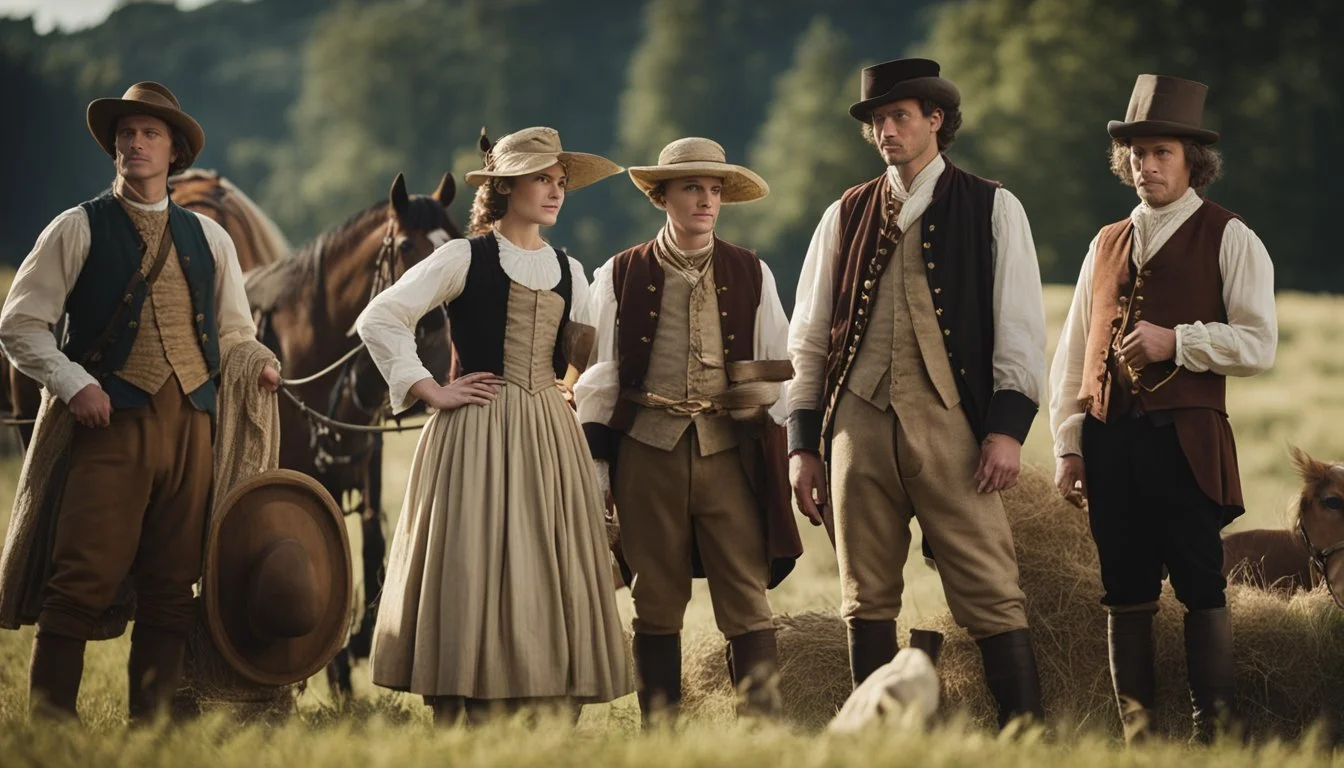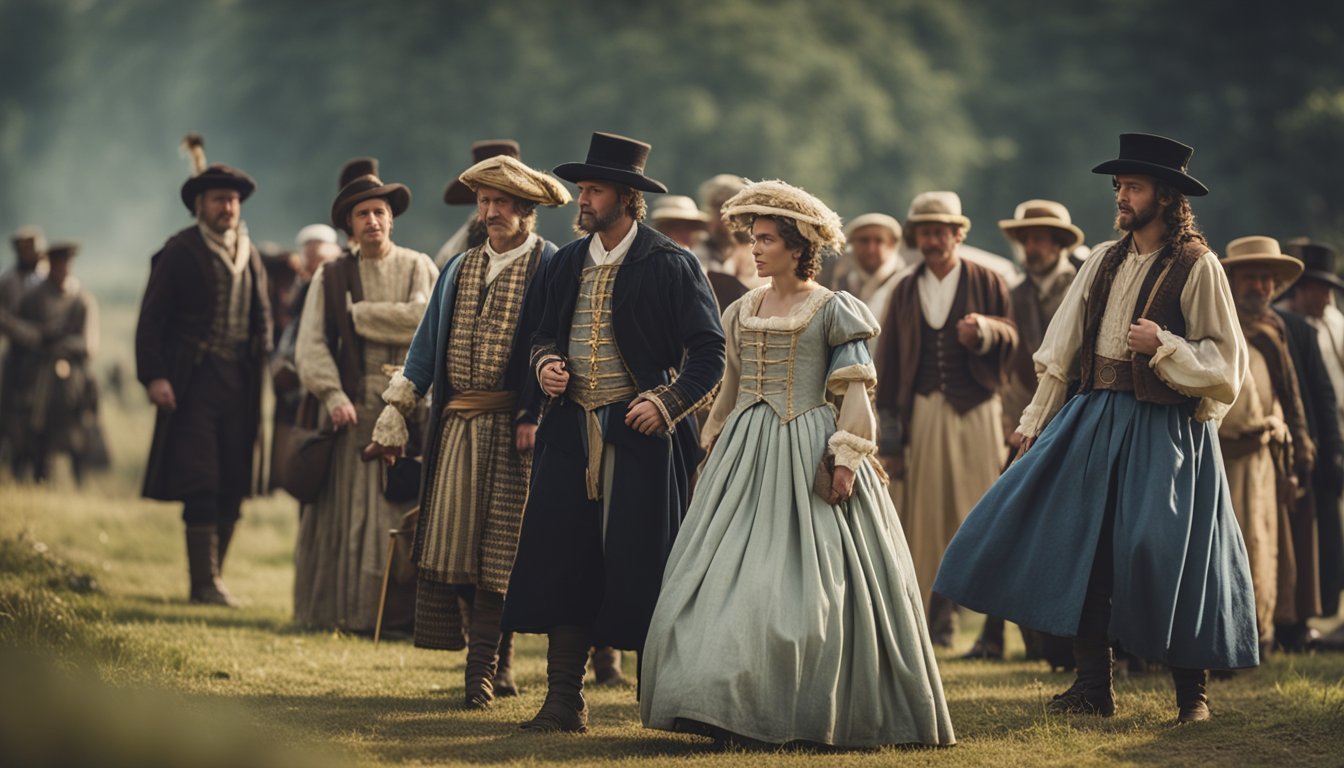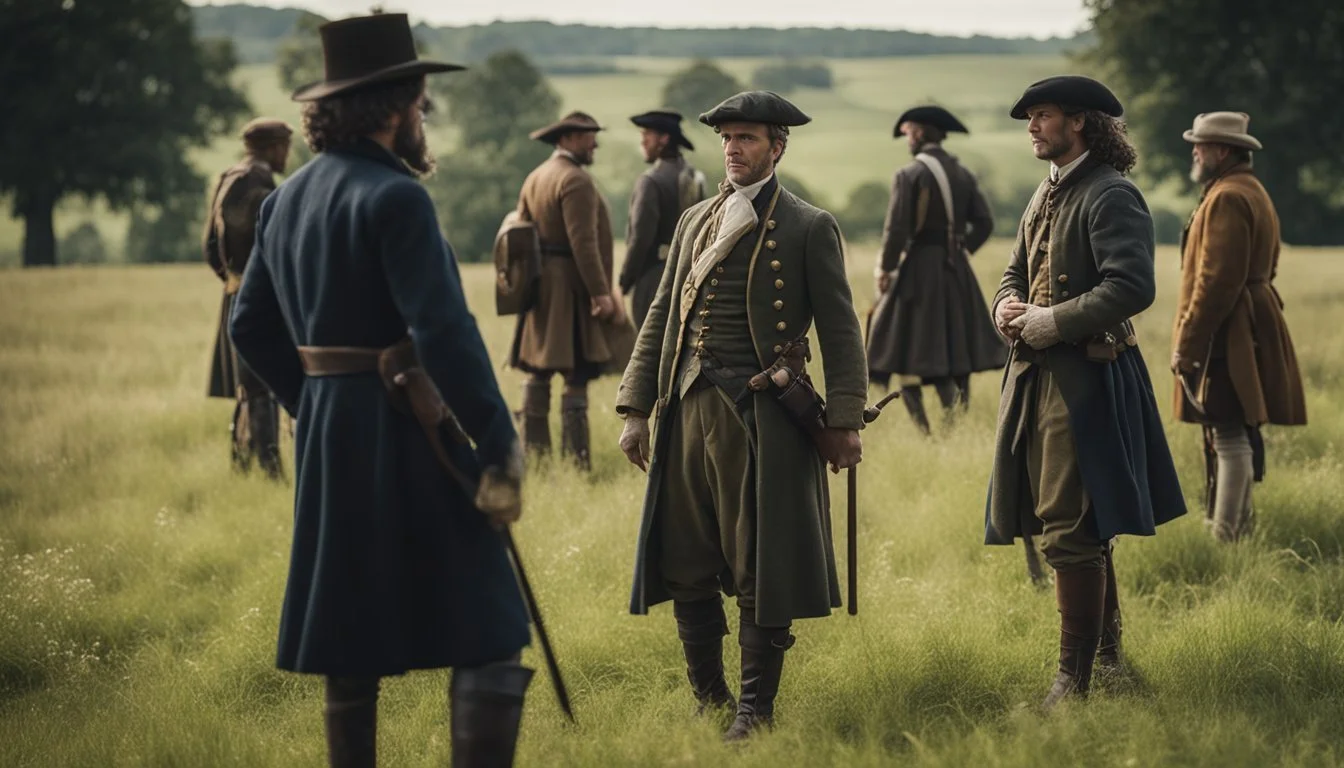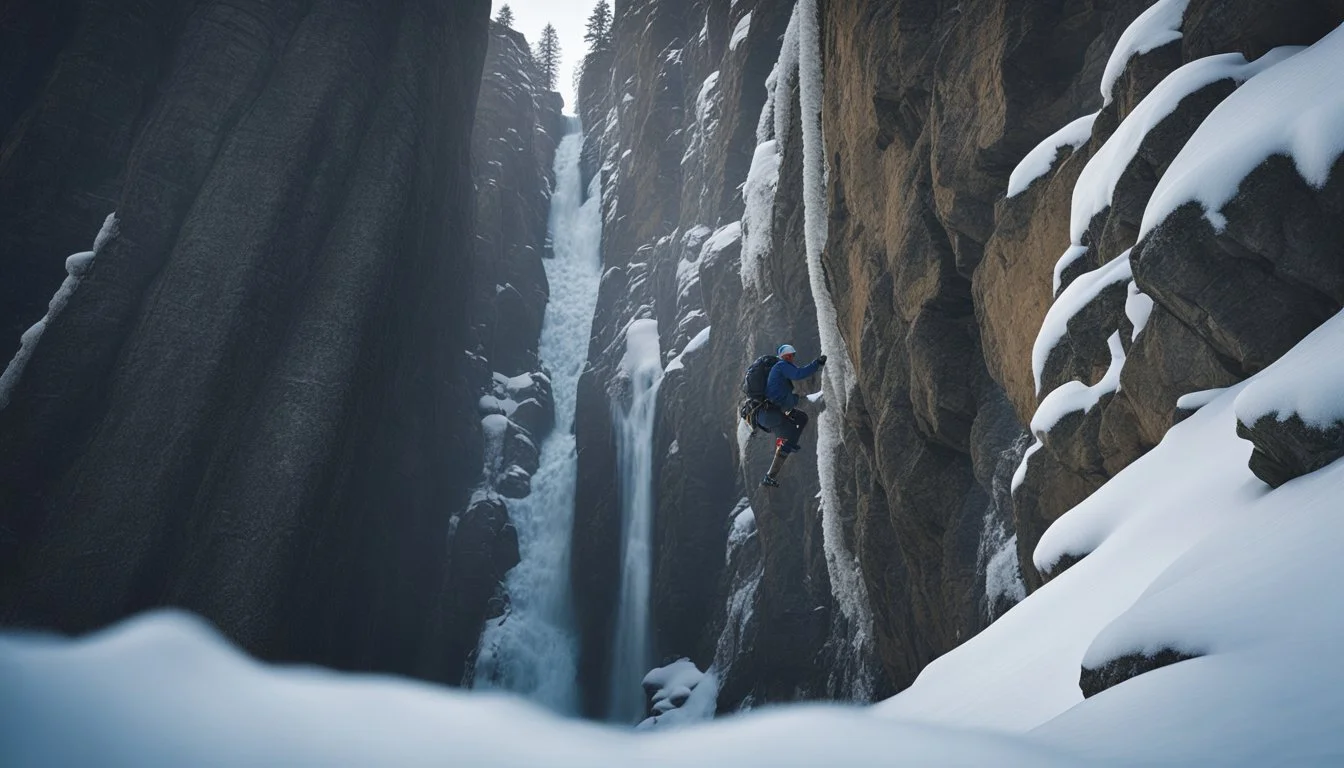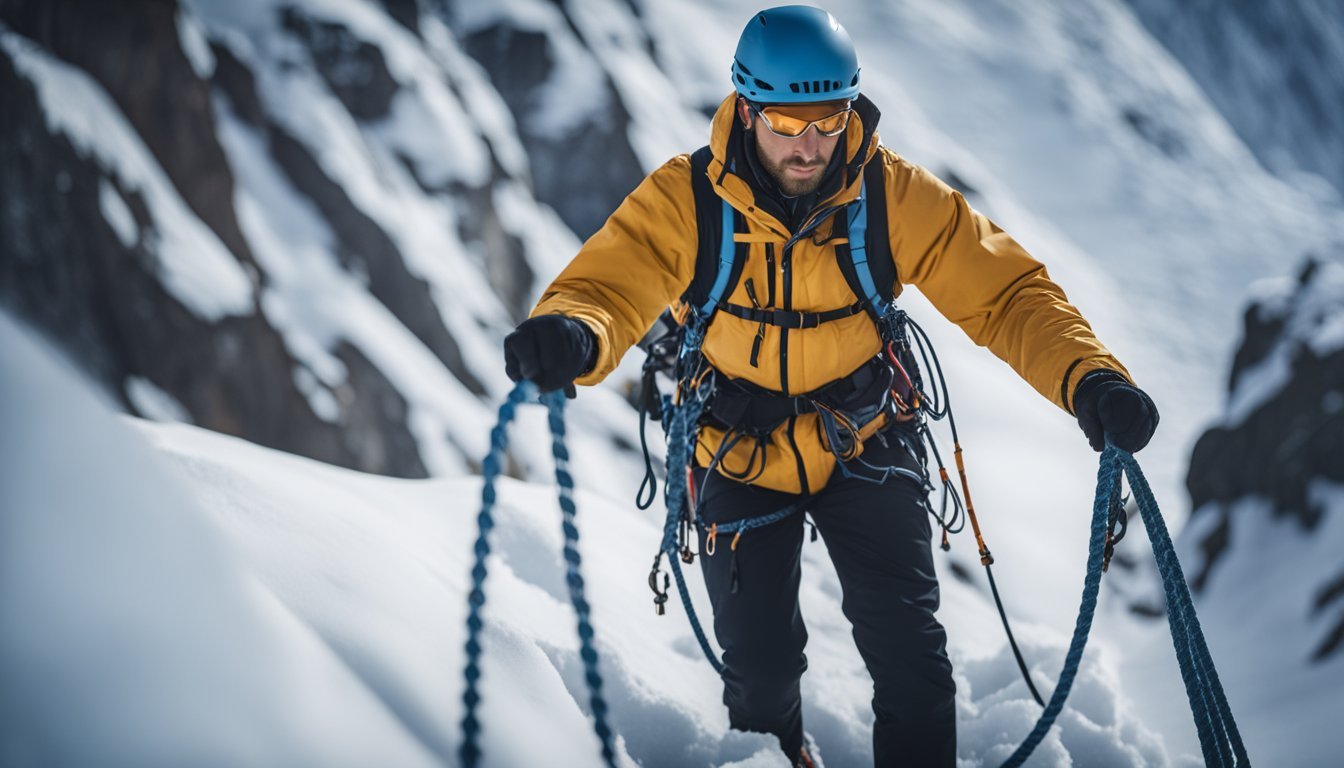Touching the Void Documentary Blurs Lines Between Reenactment and Reconstruction
Historical reenactments offer a unique window into the past, allowing participants and observers to engage with history in a tangible way. These events often blur the lines between recreation and reconstruction, raising questions about authenticity and interpretation.
"Touching the Void" presents an intriguing case study in this realm. The film combines elements of documentary, reenactment, and dramatic reconstruction to tell the harrowing true story of two climbers' near-fatal expedition in the Peruvian Andes. This approach challenges traditional notions of historical representation and invites viewers to consider the nature of memory and lived experience.
By interweaving interviews with the actual climbers and dramatized scenes featuring actors, "Touching the Void" creates a hybrid narrative that goes beyond simple reenactment. This technique allows the film to explore the psychological and emotional aspects of the event in ways that a straightforward documentary might not achieve.
Historical Context of Reenactments
Historical reenactments emerged as a way to bring the past to life, blending education and entertainment. This practice evolved from simple commemorations to immersive experiences that engage participants and spectators alike.
Evolution of Living History
Living history began in the late 19th century as museums sought to create more engaging exhibits. Pioneers like Artur Hazelius in Sweden and Henry Ford in the United States developed open-air museums that showcased historical buildings and costumed interpreters. These early efforts laid the groundwork for more interactive forms of historical presentation.
By the mid-20th century, living history had gained popularity in national parks and heritage sites. Interpreters in period dress demonstrated historical crafts and daily life, offering visitors a glimpse into the past. This approach emphasized authenticity and hands-on experiences, allowing people to connect with history on a personal level.
The Civil War Centennial and Public Engagement
The American Civil War Centennial (1961-1965) marked a turning point in historical reenactments. This commemoration sparked widespread interest in Civil War history and reenactment as a hobby. The National Park Service organized battle reenactments at historic sites, drawing large crowds and media attention.
These events popularized the idea of recreating specific historical moments. Participants invested in authentic uniforms, weapons, and equipment. The centennial reenactments set standards for accuracy and realism that continue to influence modern reenactments.
Civil War reenactments also raised public awareness of preservation efforts. Many battlefields and historic sites saw increased visitation and support. This period solidified reenactment as a way to educate the public and honor historical figures and events.
Defining Reenactment and Reconstruction
Reenactment and reconstruction represent distinct approaches to revisiting historical events. While both aim to recreate past experiences, they differ in their methods, contexts, and purposes.
Reenactment: Motivations and Manifestations
Reenactment involves recreating historical events or periods, often for educational or entertainment purposes. Participants dress in period-appropriate clothing and act out specific scenarios.
Authenticity is a key concern for reenactors, who strive to accurately portray historical figures and events. This can include using replica weapons, tools, and everyday items from the chosen era.
Civil War reenactments are particularly popular in the United States. These events often recreate famous battles between Union and Confederate forces, allowing spectators to witness "living history."
Reconstruction: Political and Social Dimensions
Reconstruction refers to the post-Civil War period in American history from 1865 to 1877. It focused on rebuilding the South and reintegrating former Confederate states into the Union.
This era saw significant political changes, including the passage of Constitutional amendments granting citizenship and voting rights to former slaves. Efforts were made to transform Southern society and address the legacy of slavery.
Property rights became a contentious issue during Reconstruction. The promise of "40 acres and a mule" for freed slaves was largely unfulfilled, while many former plantation owners sought to reclaim their land and authority.
Cultural Impact of Reenactments
Reenactments have profoundly shaped public understanding of history and cultural heritage. They serve as powerful educational tools while providing engaging entertainment experiences for participants and spectators alike.
Education and Entertainment
Historical reenactments offer immersive learning experiences that bring the past to life. Participants and viewers gain hands-on insights into historical events, daily life, and social customs of bygone eras. These events often feature authentic period costumes, tools, and practices.
Many reenactments focus on pivotal moments in history, such as Civil War battles or colonial settlements in the United States. They provide tangible connections to abstract historical concepts, making them more relatable and memorable.
Reenactments also serve as popular entertainment attractions. They draw crowds seeking both education and excitement. Some events incorporate elements of theater or interactive roleplaying to enhance audience engagement.
Heritage and Memory
Reenactments play a crucial role in preserving cultural heritage and collective memory. They help keep traditions and historical narratives alive across generations. For many communities, these events are opportunities to celebrate their roots and shared history.
In the United States, reenactments of the Civil Rights Movement have become powerful tools for education and remembrance. They honor the struggles and achievements of African Americans in the fight for equality.
These performances can also challenge dominant historical narratives. By highlighting overlooked perspectives or events, reenactments contribute to a more inclusive understanding of the past.
However, reenactments sometimes face criticism for potentially romanticizing or oversimplifying complex historical events. Critics argue that some portrayals may perpetuate stereotypes or gloss over painful aspects of history.
Social Dynamics in Historical Reenactments
Historical reenactments involve complex social interactions between participants and spectators. These events blend education, entertainment, and cultural preservation while raising questions about representation and authenticity.
Participation and Representation
Historical reenactments attract diverse participants, from history enthusiasts to professional actors. Civil War reenactors often meticulously research and portray specific soldiers or civilians. African Americans participate in various events, bringing visibility to historically underrepresented perspectives.
Living history demonstrations engage the public through interactive displays of period skills and daily life. Some reenactors, dubbed "farbs," take a more casual approach to historical accuracy. This spectrum of involvement reflects differing motivations:
Education and preservation of historical knowledge
Social connections and community building
Personal interest in specific time periods or events
Authenticity versus Spectacle
Reenactments walk a fine line between historical accuracy and public entertainment. Organizers must balance educational goals with the need to engage audiences. Authentic costumes, props, and settings create immersive experiences.
However, the pursuit of spectacle can sometimes overshadow historical nuance. Battle reenactments, while visually impressive, may simplify complex events. The emphasis on military aspects can eclipse social and political contexts.
Debates arise over appropriate levels of authenticity:
Use of modern safety equipment
Inclusion of marginalized voices and perspectives
Portrayal of controversial historical practices
These discussions reflect broader societal conversations about how history is remembered and presented.
The Role of Museums and Archives
Museums and archives serve as vital guardians of history, preserving artifacts and documents while providing educational experiences. They curate collections, conduct research, and engage the public through exhibits and programs.
Curating the Past for the Present
Museums carefully select and display objects to tell meaningful stories about the past. Curators research artifacts to provide historical context and relevance. Archives organize and preserve primary source documents, making them accessible to researchers and historians. Digital technologies now allow for virtual exhibitions and online access to collections, expanding their reach.
Many institutions recreate historical environments or events to provide immersive learning experiences. These reconstructions require extensive research to ensure accuracy. Museums often collaborate with academic historians to verify details and interpretations.
Educational Outreach and Programming
Museums develop educational programs for schools and the general public. These may include guided tours, workshops, and lectures. Hands-on activities and interactive displays engage visitors of all ages. Some museums offer internships and research opportunities for students and scholars.
Archives provide training in primary source research methods. They host workshops on topics like genealogy and local history. Many institutions now offer digital literacy programs to help patrons navigate online resources. Museums and archives play a crucial role in lifelong learning and cultural enrichment.
Authenticity in Reenacting
Authenticity is a central concern in historical reenactment. Reenactors strive to recreate past events and experiences as accurately as possible through meticulous attention to detail in uniforms, gear, and historically appropriate behavior.
Challenges of Historical Accuracy
Achieving true historical accuracy presents numerous challenges for reenactors. Sourcing authentic period uniforms and equipment can be difficult and expensive.
Many items must be custom-made or painstakingly reproduced. Aging techniques are used to make new gear appear appropriately worn.
Reenactors debate how far to take authenticity. Some "hardcore authentics" insist on period-correct stitching and materials down to the smallest detail.
Others argue that some modern concessions are necessary for safety and practicality. Finding the right balance is an ongoing discussion in the community.
The Authenticity Debate among Reenactors
The reenactment community is divided on authenticity standards. "Stitch counters" advocate for exact historical replication in all aspects of gear and appearance.
They criticize "polyester soldiers" who prioritize comfort over accuracy. More moderate reenactors seek a middle ground, aiming for a high degree of authenticity without extreme measures.
Some argue that the experience and educational value matter more than perfect historical fidelity. Others contend that meticulous accuracy is crucial for creating an immersive atmosphere.
This debate reflects broader questions about the purpose and value of historical reenactment as both a hobby and an educational tool.
Controversies and Modern Perspectives
Reenactments and reconstructions of historical events raise complex issues around authenticity, ethics, and the portrayal of sensitive topics. These practices continue to evolve as society grapples with difficult aspects of the past.
Reenactments and the Perception of History
Civil War battle reenactments have faced criticism for potentially romanticizing violence and warfare. Some argue these events can trivialize the profound loss of life and human suffering that occurred. Others defend reenactments as educational tools that bring history to life.
Historical reconstructions of slavery have also proven controversial. Critics contend such portrayals risk normalizing brutal oppression. Proponents claim they provide visceral understanding of this dark chapter in history.
Debates persist around the historical accuracy of reenactments. Even with meticulous research, modern biases and knowledge gaps can influence interpretations of past events.
Addressing Racism and Exclusion
Traditional reenactments have often excluded or marginalized people of color. This perpetuates skewed narratives that erase diverse experiences and contributions throughout history. Many groups now actively work to increase representation and tell more inclusive stories.
Confederate monuments and symbols remain flashpoints in ongoing dialogues about racism and Civil War memory. Some see these as important historical artifacts, while others view them as painful reminders of oppression that should be removed from public spaces.
Efforts to confront difficult truths about slavery, the Ku Klux Klan, and civil rights struggles through reconstructions face ethical challenges. Balancing educational value against potential retraumatization requires careful consideration.
Legacy and Future of Reenactments
Reenactments continue to evolve, balancing tradition with modern innovations. Their legacy endures through dedicated hobbyists, while facing new challenges and opportunities in the 21st century.
21st Century Trends and Changes
Digital technology has transformed historical reenactments. Virtual and augmented reality offer immersive experiences, allowing participants to "revel" in the past without physical props. Social media connects reenactors globally, fostering camaraderie across borders.
Aging demographics pose challenges for some events, particularly American Civil War reenactments. Younger generations show less interest in traditional formats. To adapt, organizers incorporate interactive elements and educational components.
Diversity and inclusion efforts aim to broaden participation. Reenactments now showcase previously underrepresented historical figures and events. This shift provides a more comprehensive view of history.
Preserving Traditions versus Innovating
Balancing authenticity with accessibility remains a key issue. Purists advocate for strict historical accuracy in costumes and practices. Others argue for modernization to attract new enthusiasts.
Some events blend old and new, using period-correct items alongside modern safety equipment. This approach maintains the spirit of tradition while addressing practical concerns.
Innovation extends to event formats. Living history museums offer ongoing reenactments, providing stable venues for hobbyists. Pop-up events in urban areas bring history to new audiences.
Ethical considerations shape modern reenactments. Organizers grapple with portraying sensitive topics respectfully. This reflection on historical representation adds depth to the hobby's legacy.
Conclusion
"Touching the Past" blurs the lines between reenactment and reconstruction, offering a unique perspective on historical events. This approach challenges traditional views of the New South and Reconstruction era.
By physically embodying historical figures, participants gain deeper insights into the lived experiences of those who came before. This visceral connection to history can be powerfully transformative for both performers and audiences.
The practice raises important questions about authenticity and interpretation in historical representation. While striving for accuracy, these performances inevitably reflect modern sensibilities and understandings.
Reenactments of traumatic events like slave auctions are particularly contentious. They have the potential to educate and generate empathy, but also risk trivializing profound suffering.
Ultimately, "Touching the Past" demonstrates the complex interplay between past and present. It highlights how our understanding of history is constantly evolving, shaped by new perspectives and approaches to engagement with the past.


